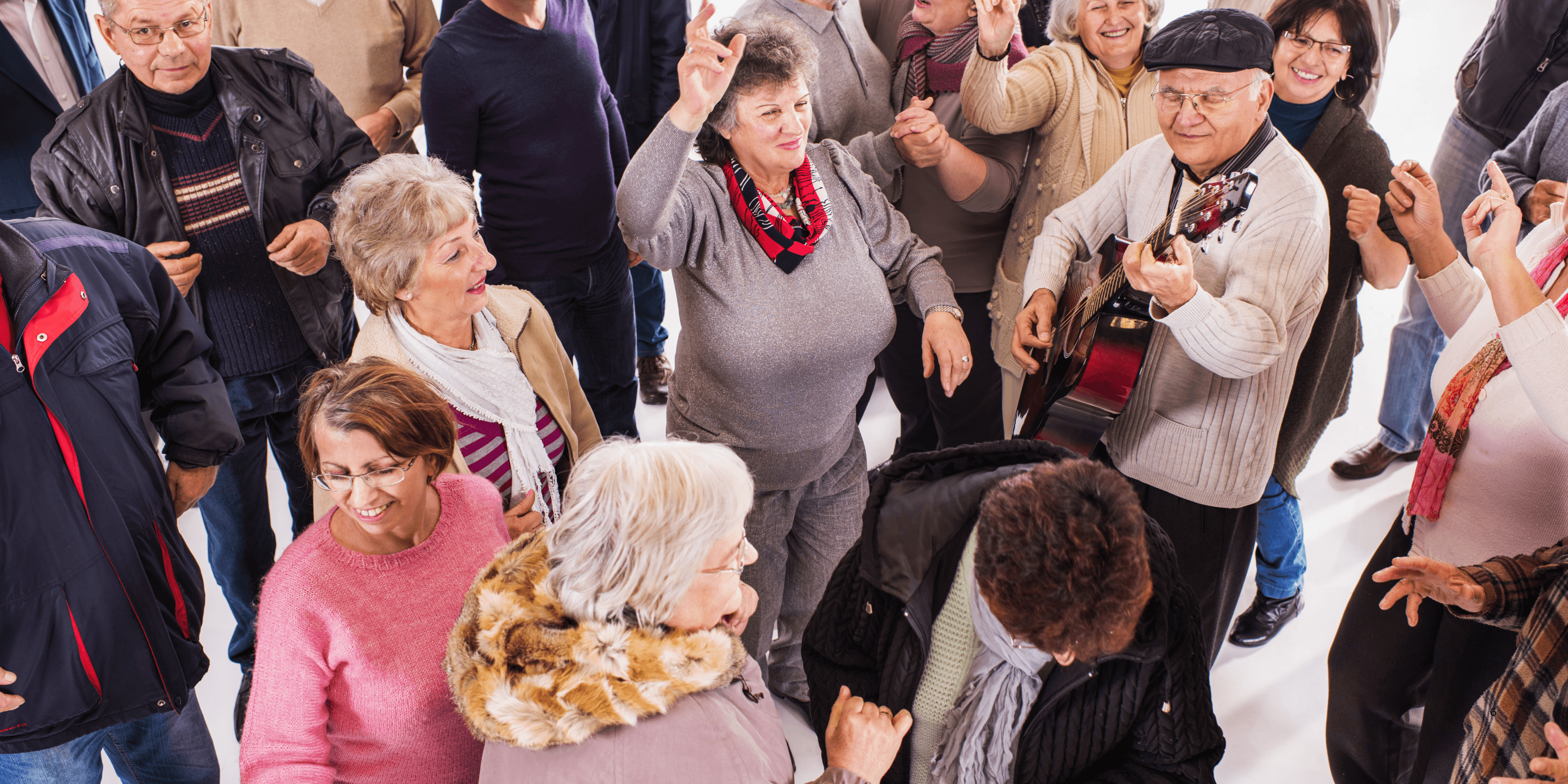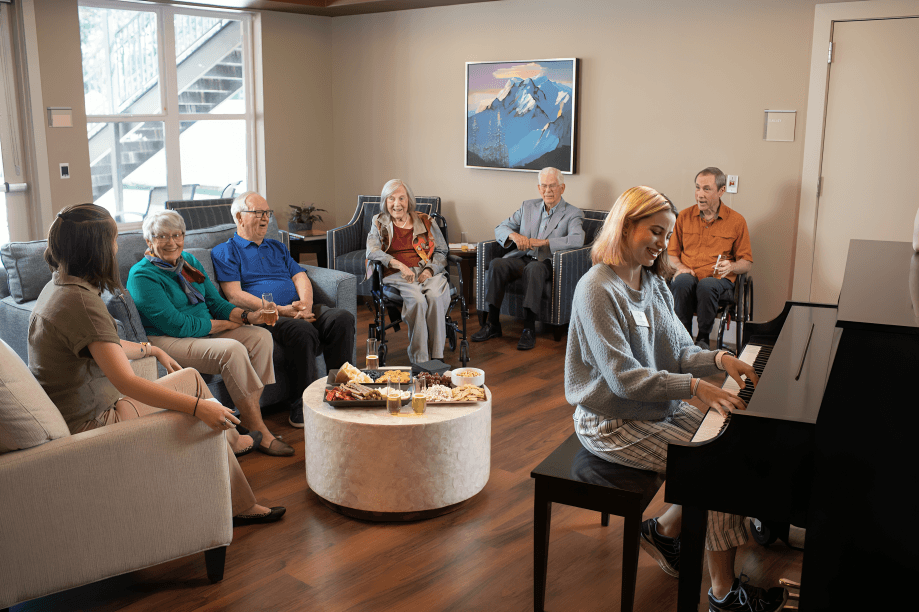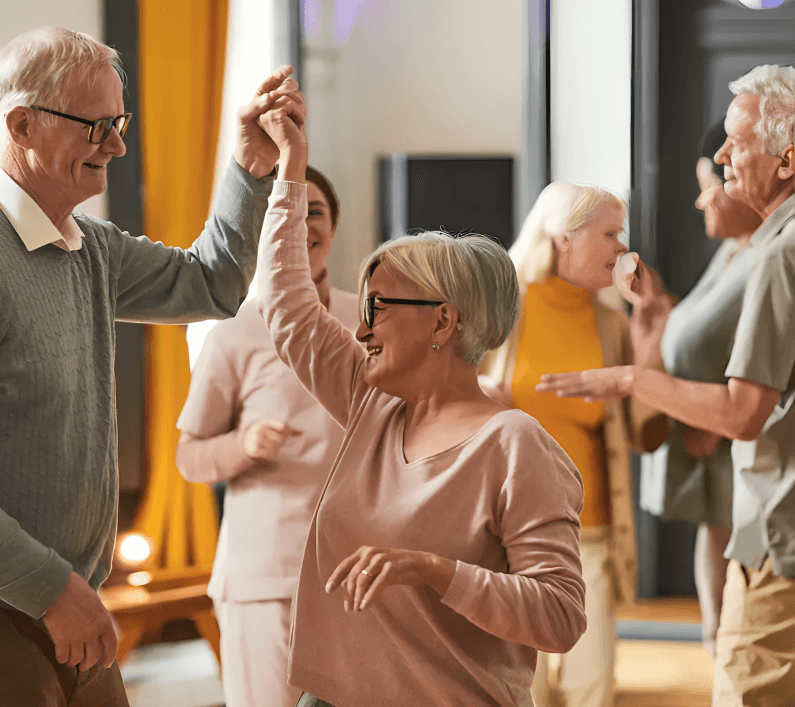
“
The role of dance & music therapy in senior care is gaining increasing recognition as more healthcare providers embrace non-pharmacological methods to enhance seniors' lives. Whether it’s soft melodies that soothe anxiety or guided dance movements that improve balance, the benefits are vast. In the evolving landscape of elder care, dance and music are not mere pastimes—they are vital therapeutic tools. 1
1
”
Dance therapy improves balance and coordination in seniors by stimulating motor areas of the brain, which helps reduce falls—one of the leading causes of injury among older adults. 1
Rhythmic music activates the brain’s reward system, triggering dopamine release. For seniors, this chemical boost improves mood, fights depression, and enhances motivation for social engagement. 2

Group music sessions in senior homes enhance emotional bonding and reduce loneliness, offering a safe and shared space for self-expression and memory-sharing among elderly residents.
Listening to familiar songs from their youth helps seniors with dementia recall long-lost memories, enabling better communication and re-establishing emotional connections with caregivers and family members. 3
Dance therapy can enhance cardiovascular health by promoting gentle movement and improving circulation without putting stress on joints—especially beneficial for seniors with arthritis. 4
Music therapy has shown to significantly reduce agitation and restlessness in seniors with Alzheimer’s disease, helping them feel calmer and more focused during their daily routines. 5
Practicing simple choreographed dance routines sharpens attention span and strengthens cognitive abilities, as seniors must remember steps and rhythms—all promoting mental agility. 6
Music reduces cortisol, the stress hormone, in seniors. This leads to better sleep quality, lowered blood pressure, and an overall sense of peace—essential for aging bodies. 7
Dancing helps stimulate proprioception—the sense of body position and movement—which is often diminished in seniors, leading to enhanced stability and confidence while moving. 8

Seniors participating in weekly dance sessions often report reduced pain perception, especially in those suffering from chronic illnesses like fibromyalgia or osteoarthritis.
Music therapy offers emotional release for seniors who may struggle to articulate grief or past trauma, acting as a bridge for difficult feelings and aiding emotional healing. 9
Drumming therapy, a form of rhythmic engagement, is particularly effective in increasing coordination and boosting emotional release, especially in seniors with physical limitations. 10
Musical instruments like tambourines and maracas allow seniors with limited mobility to participate actively in sessions, fostering inclusion and encouraging movement through rhythm. 11
Dance therapy supports neuroplasticity in aging brains, helping form new neural connections that keep the mind flexible and delay cognitive decline in seniors with early dementia. 12
Music activates multiple areas of the brain, including regions responsible for emotion, movement, and memory, making it a holistic tool for comprehensive mental stimulation in older adults. 13

Seniors involved in music and dance therapy programs show better socialization outcomes, such as more frequent interactions, laughter, and openness to group activities.
Movement synchronized with music improves gait and spatial awareness in seniors recovering from strokes or neurological conditions, making rehabilitation more enjoyable and effective. 14
Music therapists often personalize playlists for seniors, choosing songs from their cultural background or youth to ignite emotional responses and foster deeper therapeutic engagement. 15
Dance sessions customized to each senior’s physical ability create a sense of accomplishment and joy, especially when done in group settings that offer peer encouragement. 16
Psychiatrist Carl Jung once noted that music and movement could touch the soul where words fail—an insight mirrored in today’s use of dance and music to heal and empower seniors.17


